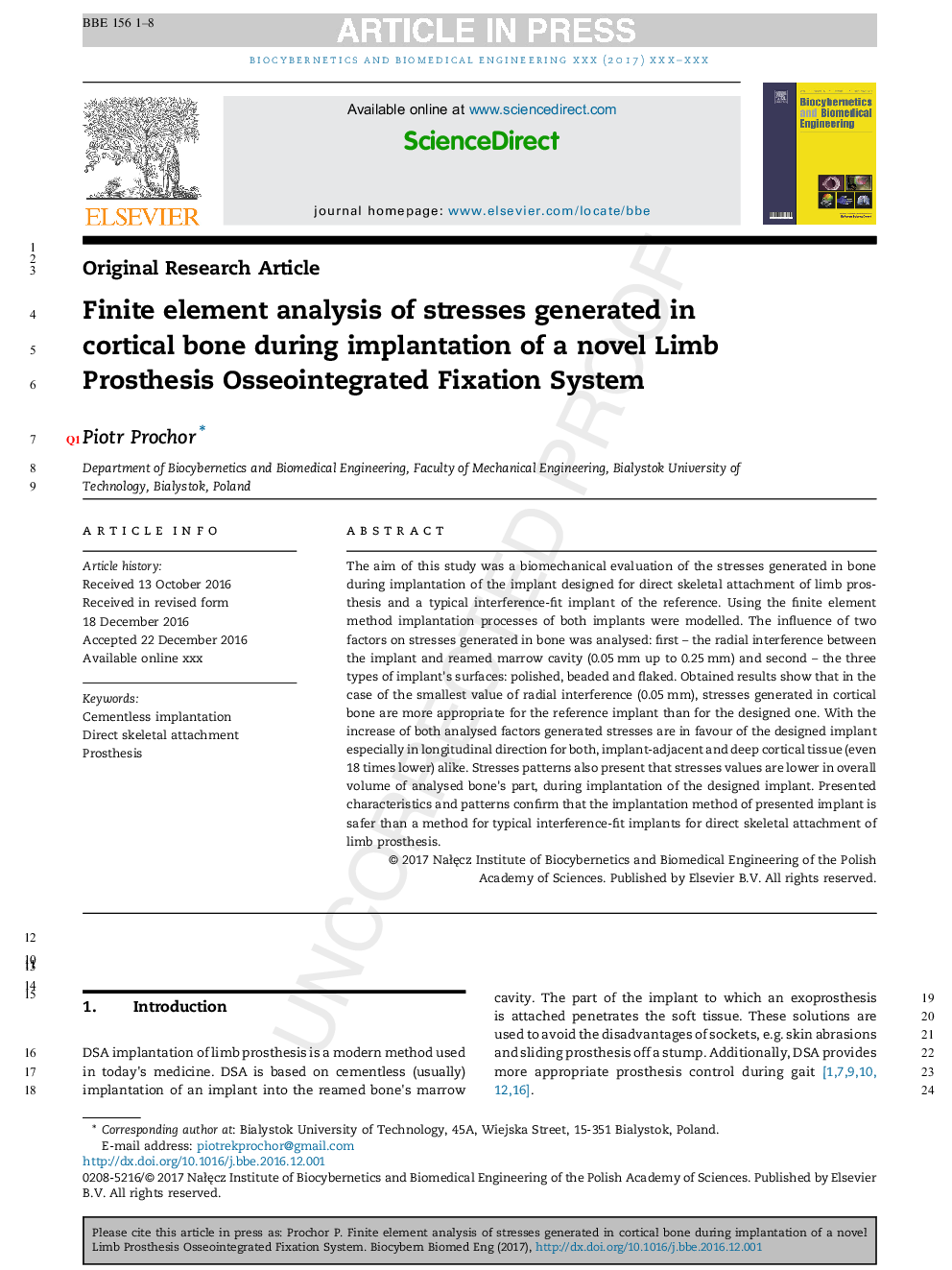| Article ID | Journal | Published Year | Pages | File Type |
|---|---|---|---|---|
| 6484231 | Biocybernetics and Biomedical Engineering | 2017 | 8 Pages |
Abstract
The aim of this study was a biomechanical evaluation of the stresses generated in bone during implantation of the implant designed for direct skeletal attachment of limb prosthesis and a typical interference-fit implant of the reference. Using the finite element method implantation processes of both implants were modelled. The influence of two factors on stresses generated in bone was analysed: first - the radial interference between the implant and reamed marrow cavity (0.05Â mm up to 0.25Â mm) and second - the three types of implant's surfaces: polished, beaded and flaked. Obtained results show that in the case of the smallest value of radial interference (0.05Â mm), stresses generated in cortical bone are more appropriate for the reference implant than for the designed one. With the increase of both analysed factors generated stresses are in favour of the designed implant especially in longitudinal direction for both, implant-adjacent and deep cortical tissue (even 18 times lower) alike. Stresses patterns also present that stresses values are lower in overall volume of analysed bone's part, during implantation of the designed implant. Presented characteristics and patterns confirm that the implantation method of presented implant is safer than a method for typical interference-fit implants for direct skeletal attachment of limb prosthesis.
Keywords
Related Topics
Physical Sciences and Engineering
Chemical Engineering
Bioengineering
Authors
Piotr Prochor,
